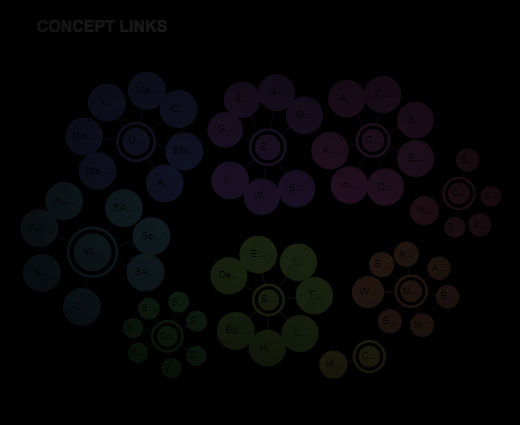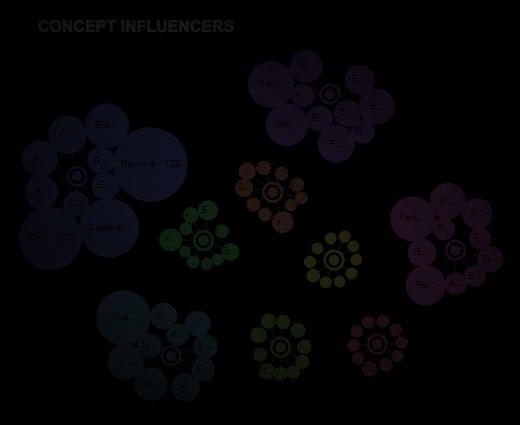Andrea Ehrmann, of the Bielefeld University of Applied Sciences, Faculty of Engineering and Mathematics, Working Group of Textile Technologies in Bielefeld, Germany, explores 3D printing in the textile chain.
3D printing belongs to the emerging technologies of our time. It enables relatively fast production of prototypes or single items, with the mechanical properties, surface quality etc, strongly depending on the material and the technology used as well as a potential after-treatment, eg by polishing or a thermal treatment.
Large objects, however, still need long times to be produced. This is why combinations of 3D printed objects with materials which can be produced fast on large scales are supportive for several applications. Textiles belong to the typical materials used in combination with 3D printed objects, allowing creation of new mechanical and optical properties.
Fused Deposition Modeling
Different technologies exist in the area of 3D printing. While stereo-lithography and selective laser sintering are often used for very sophisticated models,[1] fused deposition modeling (FDM) is the technology applied in most inexpensive 3D printers. Additionally, this technology allows for printing with diverse filaments on other materials or embedding other objects into the 3D-printed objects.
The FDM technology works in the following way: A polymer filament is transported to an extruder, in which it is heated above the melting point. The molten polymer is placed at defined positions on the printing bed, usually line by line subsequently filling a desired area. When the first layer is completed, the printing bed is lowered, and the second layer is printed on top of the first.[2] Typical FDM printing materials are thermoplastic polymers, eg acrylonitrile butadiene styrene (ABS), polylactic acid (PLA), polyamide (‘nylon’) etc.[3]
Combining 3D printing and textile fabrics
Over the last few years, several attempts have been made to print textile structures, or to combine 3D printing with textile fabrics. Even highly three-dimensional fabrics, such as knitted structures, could be produced by selective laser sintering.[1,4] While FDM printing showed severe problems in this issue, it could be used to create lace-like patterns, which were oriented more in-plane and could thus be printed easier with this technology.[4]
Similar flat floral patterns were printed on textile fabrics, showing that the adhesion between textile surface and imprinted polymer was critical for several material combinations.[5] Adhesion problems also occurred when carbon fibre yarns were embedded in 3D printed objects; they could easily be pulled out by hand.[6] While it could be shown that a heating process after 3D printing with embedded carbon fibres could slightly increase the adhesion of the carbon fibres in the 3D-printed polymer matrix, the bond between both materials is still insufficient.[7]
On the other hand, combinations of textile fabrics with special 3D imprinted shapes were shown to not only modify the mechanical properties of the textile fabric, but to also allow for creating composites with completely new properties that would otherwise not be reachable,[8,9] such as imprinted lamellae, auxetic shapes or imprinted conductive or magnetic areas (Fig 1). This is why understanding and optimising the adhesion between both materials is of high importance.
 Fig 1
Fig 1
Nevertheless, only few pieces of research have been performed to date on this topic. The adhesion between a textile surface and an imprinted polymer can be measured according to DIN 53530, necessitating 3D printed strips of defined dimensions on the respective textile fabrics (Fig 2). In the adhesion test, a universal testing machine is used to separate both layers (polymer and textile fabric) from each other and to measure the necessary forces.

Fig 2
One of the most important parameters seems to be the distance between extruder nozzle and printing bed.[10-12] This factor significantly influences the form-locking connection between the printed polymer and the textile fabric, as depicted in Fig 3. Here it is clearly visible that in case of a large distance between printing nozzle and textile fabric, the polymer stays on top of the textile surface, without many physical connections (left panel). Opposite, for a small distance, in the most extreme case with the nozzle printing ‘below’ the surface height of the relaxed textile fabric, the polymer is pressed into the fabric (right panel). Ideally, the polymer penetrates the single yarns, ie between the fibres, resulting in a form-locking connection and thus a significantly increased adhesion.
 Fig 3
Fig 3
Other parameters, such as the nozzle diameter, nozzle and printing bed temperature, printing speed etc, were also shown to influence the adhesion between textile surface and imprinted polymer layers.[10,13] Finally, some material combinations adhere better than others due to chemical bonding. This effect can be increased by respective pre-treatments of the textile fabrics, eg by washing and desizing or plasma treatment.[14,15] Generally, there seems to be a tendency that polymers adhere better on more hydrophilic textile fabrics.[14,15]
Conclusion
The combination of three printing and textile materials allows for creating composites with completely new functionalities. Nevertheless, the adhesion between both partners is still problematic. More research in all areas, starting from polymer development to possible pre-treatments of the textile fabrics to tailoring the printing parameters to finally using after-treatments of the complete system, is still required to enable using this new class of multi-material systems.
References
1. Beecroft, M. 2016. 3D printing of weft knitted textile based structures by selective laser sintering of nylon powder. IOP Conf. Series: Materials Science and Engineering 137, 012017.
2. Novakova-Marcincinova, L, 2012. Application of fused deposition modeling technology in 3D printing rapid prototyping area. Manuf. and Ind. Eng. 11, 35-37.
3. Noorani, R., 2005. Rapid Prototyping: Principles and Applications. New Jersey: John Wiley & Sons.
4. Melnikova, R., Ehrmann, A., Finsterbusch, K., 2014. 3D printing of textile-based structures by Fused Deposition Modelling (FDM) with different polymer materials. IOP Conf. Ser.: Mater. Sci. Eng. 62, 012018
5. Sabantina, L., Kinzel, F., Ehrmann, A., Finsterbusch, K., 2015. Combining 3D printed forms with textile structures – mechanical and geometrical properties of multi-material systems, IOP Conference Series: Mat. Sci. Eng. 87, 012005.
6. Richter, C., Schmülling, S., Ehrmann, A., Finsterbusch, K., 2015. FDM printing of 3D forms with embedded fibrous materials, Design, Manufacturing and Mechatronics, 961-969.
7. Mori, K.-i., Maeno, T., Nakagawa, Y., 2014. Dieless forming of carbon fibre reinforced plastic parts using 3D printer, Procedia Engineering 81, 1595-1600.
8. Grimmelsmann, N., Meissner, H., Ehrmann, A., 2016. 3D printed auxetic forms on knitted fabrics for adjustable permeability and mechanical properties. IOP Conference Series: Materials Science and Engineering 137, 012011.
9. Neuß, J., Lutz, M., Grimmelsmann, N., Korger, M., Ehrmann, A., 2016. Interaction between 3D deformation of textile fabrics and imprinted lamellae. Proceedings of Aachen-Dresden-Denkendorf International Textile Conference, Dresden, November 24-25, 2016
10. Döpke, C., Grimmelsmann, N., Ehrmann, A., 2016. 3D printing on knitted fabrics. Proceedings of 48th IFKT Congress, Mönchengladbach, June 8-11, 2016.
11. Döpke, C., Grimmelsmann, N., Ehrmann, A., 2017. A new dimension in finishing textiles: 3D printing onto warp-knitted textiles – possibilities and technical limitations. Kettenwirk-Praxis, English edition 01/2017, 25-27.
12. Grimmelsmann, N., Lutz, M., Korger, M., Meissner, H., Ehrmann, A., 2017. Adhesion of 3D printed material on textile substrates. Rapid Prototyping Journal, accepted 14-03-2017.
13. Sanatgar, R. H., Campagne, C., Nierstraz, V., 2017. Investigation of the adhesion properties of direct 3D printing of polymers and nanocomposites on textiles: Effect of FDM printing process parameters. Applied Surface Science 403, 551-563.
14. Korger, M., Bergschneider, J., Lutz, M., Mahltig, B., Finsterbusch, K., Rabe, M., 2016. Possible Applications of 3D Printing Technology on Textile Substrates. IOP Conf. Series: Materials Science and Engineering 141, 012011.
15. Bergschneider, J., Korger, M., Kyosev, Y., Lutz, M., Rabe, M., Mahltig, B., 2017. 3D printing for functionalization of textiles – aspects of durability and coating adhesion. Melliand International 23, 45-47.









